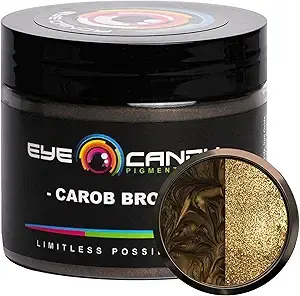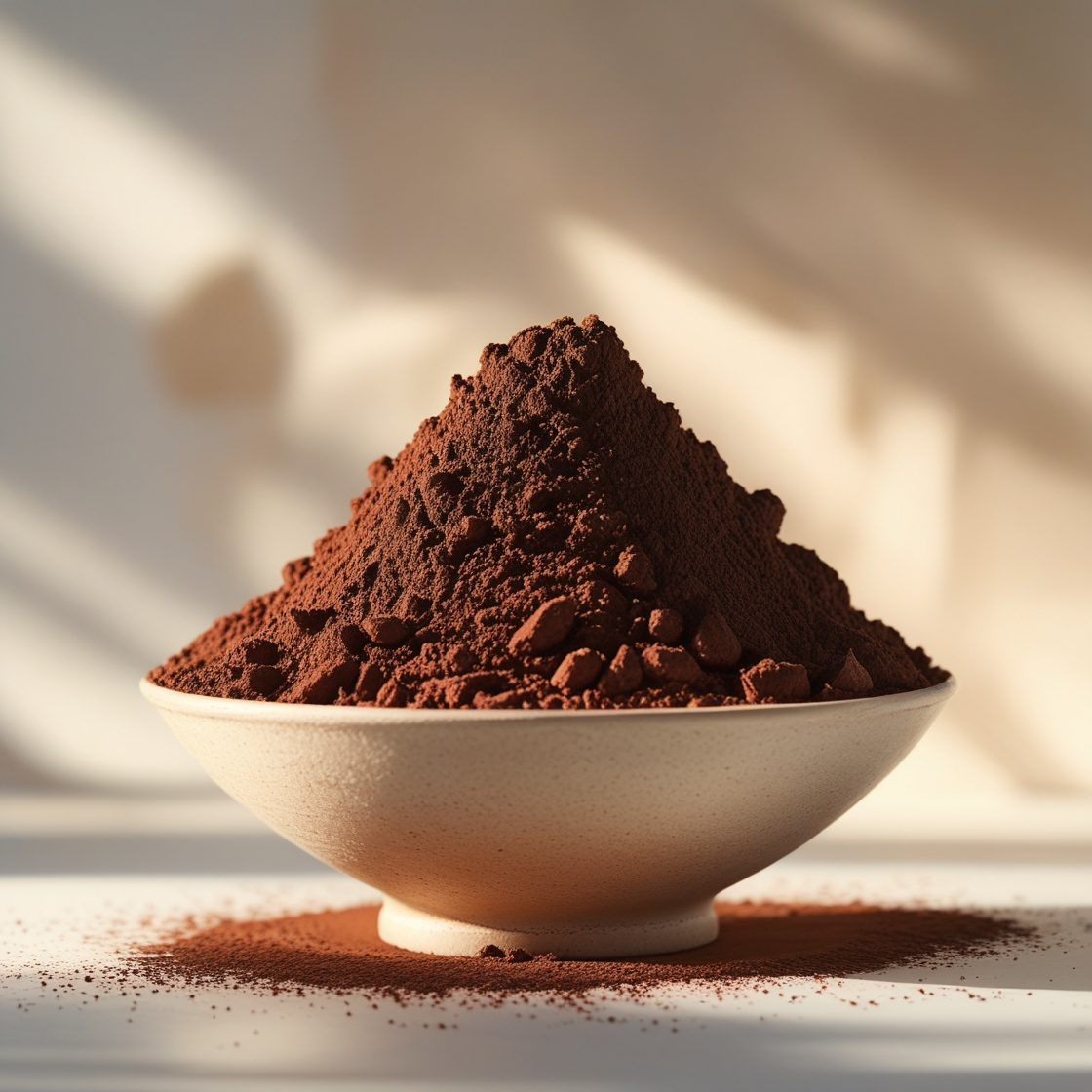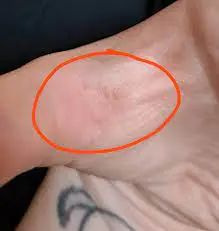Carob Powder: Benefits & Uses Side Effect
Introduction
Carob Powder: Benefits & Uses Side Effect. Carob powder, also called carob flour, is a cocoa powder alternative. It’s made from dried, roasted carob tree pods and looks a lot like cocoa powder. Carob powder is often used as a natural sweetener in baked goods. It’s sweet and has a unique taste. Read on to learn about the health benefits and nutrition facts for carob powder.

What is carob powder?
Carob powder comes from the sweet, ripe pulp of carob pods. People dry, roast, and grind the pulp to produce a fine powder or flour.
It has a rich, nutty taste that is somewhat similar to caramel. People often use it in place of cocoa powder or chocolate. Although it has a milder, slightly bitter flavor, it can act as a substitute in some cases. Carob powder can be either raw or roasted. Lightly roasted is sweeter than dark-roasted powder, which has a more bitter, intense taste.
Nutrition Facts
Carob Powder, 2 tablespoons
| Amount | |
| Sugar | 6 g |
| Sodium | 0 g |
| Calcium | 42 mg |
| Fiber | 5 g |
| Iron | 0.35 g |
| Magnesium | 6 mg |
| Potassium | 99 mg |
| Riboflavin | 0.055 mg |
| Niacin | 0.228 mg |
How is it used?
There are various ways to use carob powder, and it is particularly common in “healthier” recipes. These include recipes for baked goods, drinks, and no-bake treats.
Although carob peaked in popularity during the 1970s “health food” trend, it has come back into fashion in recent years.
Carob is sweeter and less bitter than cocoa, so people may need to use less sugar when using it as a substitute. This makes it a useful ingredient in foods such as pancakes, oatmeal, and milkshakes.
Eye Candy Pigments Premium Brown Mica Powder – Carob Brown (50gr) – for Epoxy, Resin, Soap, Paint, Woodworking, Acrylic Pouring, Bath Bombs, Fishing Lures – DIY Arts and Crafts Additive
PREMIUM FINENESS – Eye Candy mica pearls boast a size range of 10-60 microns, ensuring seamless integration with resins, lacquer, epoxy, nail polish, cosmetics, automotive paints, lotions, creams.

Additionally, people can use carob chips in place of chocolate chips.
Examples of desserts containing carob powder include:
- carob molasses cake
- carob nut balls
- creamy carob avocado mousse
- coconut carob bars
- carob brownies
- carob cookies
- carob almond freezer fudge
- carob truffles
- raspberry carob overnight oats
- carob banana bread
- banana and carob milkshake
Is carob healthy?
Carob is a nutrient-rich food that is generally safe for most people. Carob fruit is high in natural sugars and dietary fiber and low in fat.
One cup of carob flour contains:
- Calories: 229
- Carbs: 91.6 grams (g)
- Protein: 4.76 g
- Fiber: 41 g
- Fat: .67 g
Carob is also a good source of important vitamins, including:
- vitamin E
- vitamin D
- vitamin C
- niacin (vitamin B3)
- folate (folic acid)
Why eat carob?
Carob is naturally high in fiber and contains no caffeine. Despite its high sugar content, it may aid digestion and blood sugar management when used in place of chocolate.
Metabolic health
The high fiber content of carob fruit may help regulate blood sugar.
A suggests that foods containing carob flour in place of other carbohydrates may lead to a smaller increase in blood sugar levels. However, research is limited and more studies are needed to confirm these effects.
Additionally, carob contains a compound called d-pinitol, which may help with insulin regulation.
A found that participants who received d-pinitol along with carbohydrates had slower absorption rates, which helped manage insulin levels.
What is carob powder good for?
Many people use carob powder as a low-saturated-fat substitute for chocolate. You can replace 1 oz of unsweetened baking chocolate with 3 tablespoons of carob powder and 1 tablespoon of margarine. When substituting carob powder for chocolate, you should also reduce the amount of sugar in the recipe by 25% to account for the sweeter taste of the carob powder.
You can use carob powder to make many desserts and other sweet foods, including:
- Bread
- Brownies
- Cakes
- Cookies
- Fudge
- Pancakes
- Pudding
- Smoothies
- Truffles
Some recipes call for raw carob powder, so it’s a good idea to check which version you need before you start baking.
Does carob powder or cacao contain more nutrients?
What’s the difference between carob powder and cacao? Examining nutrition labels can help determine which ingredient is healthier.
A 100g portion of carob powder contains these nutrients:
- 222 calories
- 4.62g of protein
- 0.65 g of fat
- 88.9g of carbohydrates
- 39.8g of dietary fiber
- 49.1g of sugar
- 348 mg of calcium
- 827 mg of potassium
In contrast, a 100g portion of unsweetened cocoa powder contains:
- 228 calories
- 19.6g of protein
- 13.7g of fat
- 57.9 of carbohydrates
- 37g of dietary fiber
- 1.75g of sugar
- 128 mg of calcium
- 1520 mg of potassium
As this comparison shows, carob powder has several nutritional advantages over cocoa powder, including:
- Approximately three times more calcium, an essential mineral that promotes strong bones and teeth
- Moderately more fiber, which aids digestion and weight control
- Significantly less fat
- Slightly fewer calories
However, unsweetened cocoa powder does have a few benefits over carob powder. It contains almost twice as much potassium, a mineral that aids many bodily functions, such as fluid balance and muscle contractions, as well as significantly more protein. Unsweetened cocoa powder also has much less sugar than carob powder.
Based on these nutritional components, carob powder is an overall healthier choice than cacao if you are looking for a diet that offers high calcium content and low fat, whereas unsweetened cocoa may be the better choice if you prioritize protein and less sugar.
Uses & Effectiveness
Possibly Effective for
- Diarrhea. Drinking juice from raw carob bean or taking carob pod powder by mouth before taking standard oral rehydration solution (ORS) seems to reduce how long diarrhea lasts in children and infants.
- High cholesterol. Taking carob by mouth seems to reduces total cholesterol and low-density lipoprotein (LDL or “bad”) cholesterol in people with moderately high cholesterol.
There is interest in using carob for a number of other purposes, but there isn’t enough reliable information to say whether it might be helpful.
Side Effects
When taken by mouth: Carob is commonly consumed in foods. It is possibly safe when used in larger amounts as medicine, short-term. It’s generally well-tolerated, but some people might be allergic to carob.






